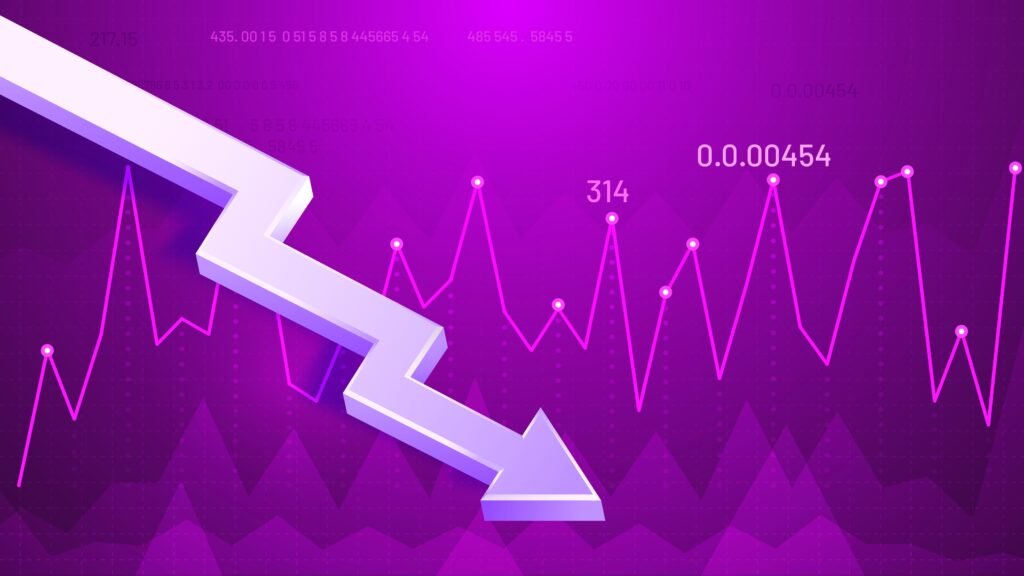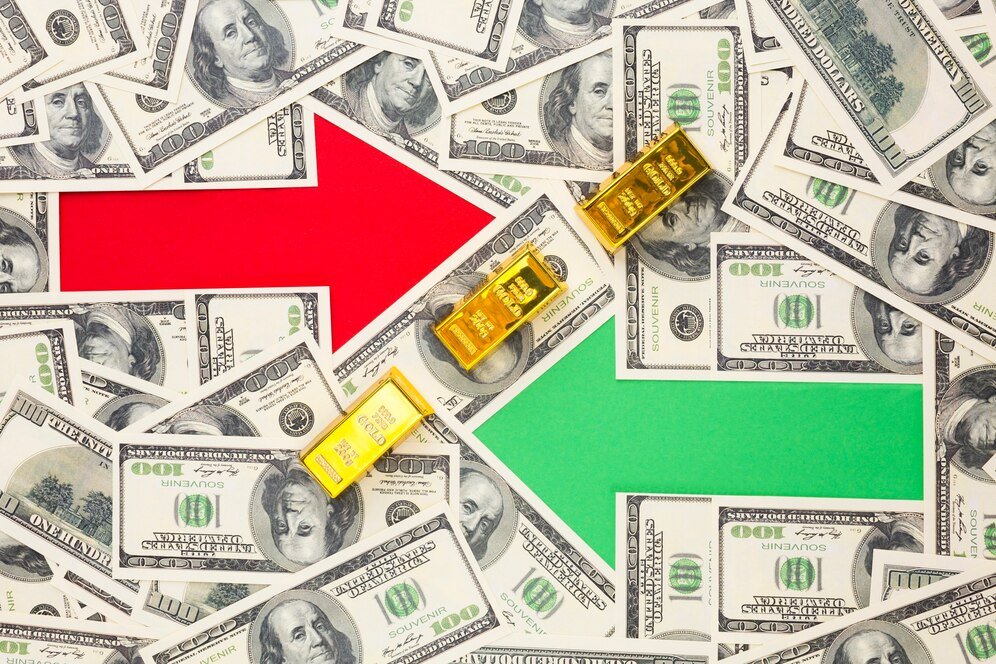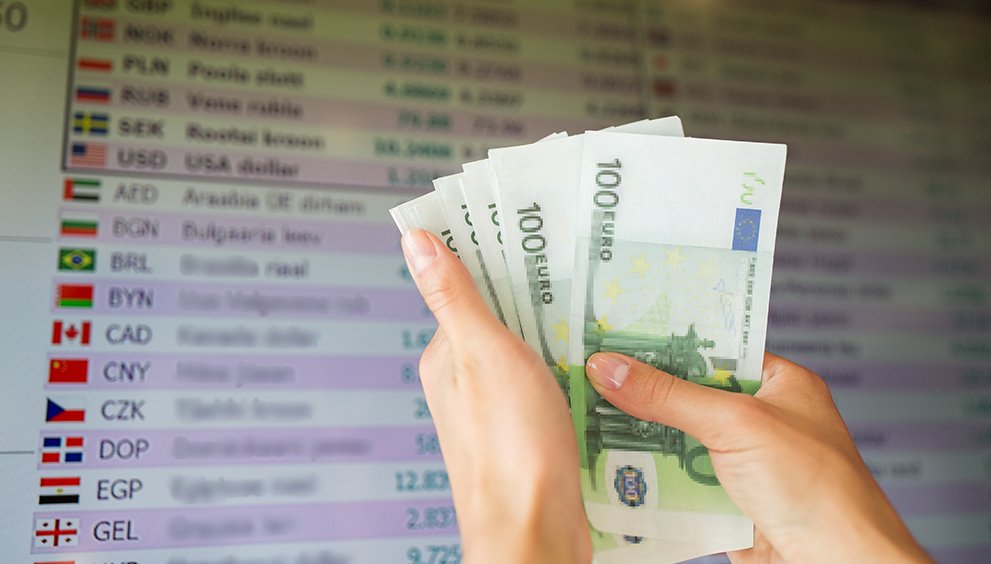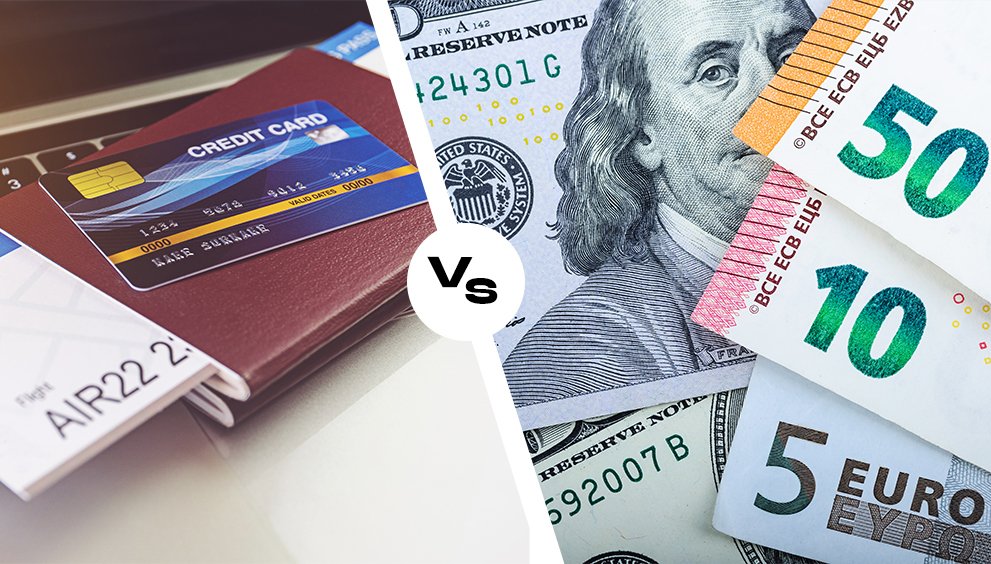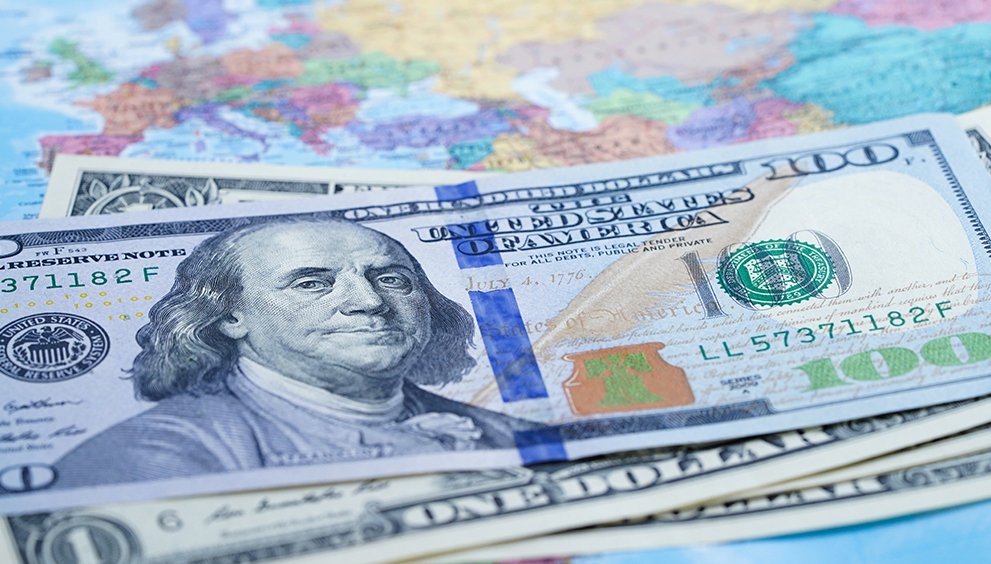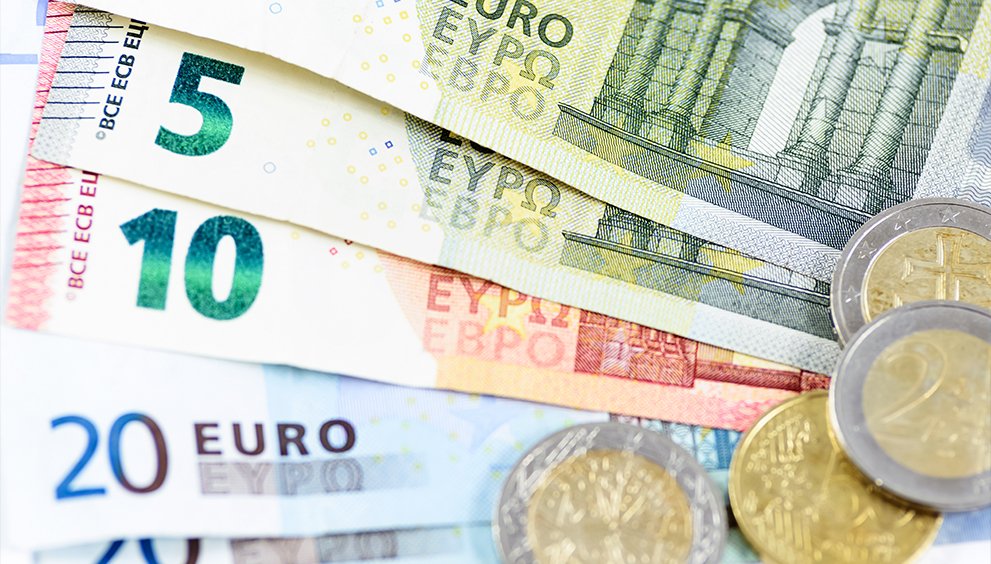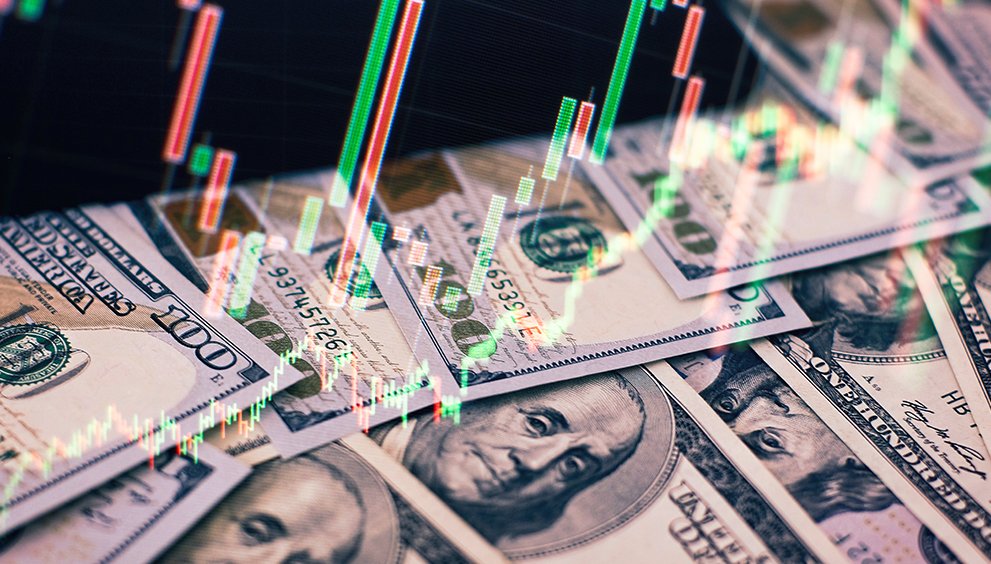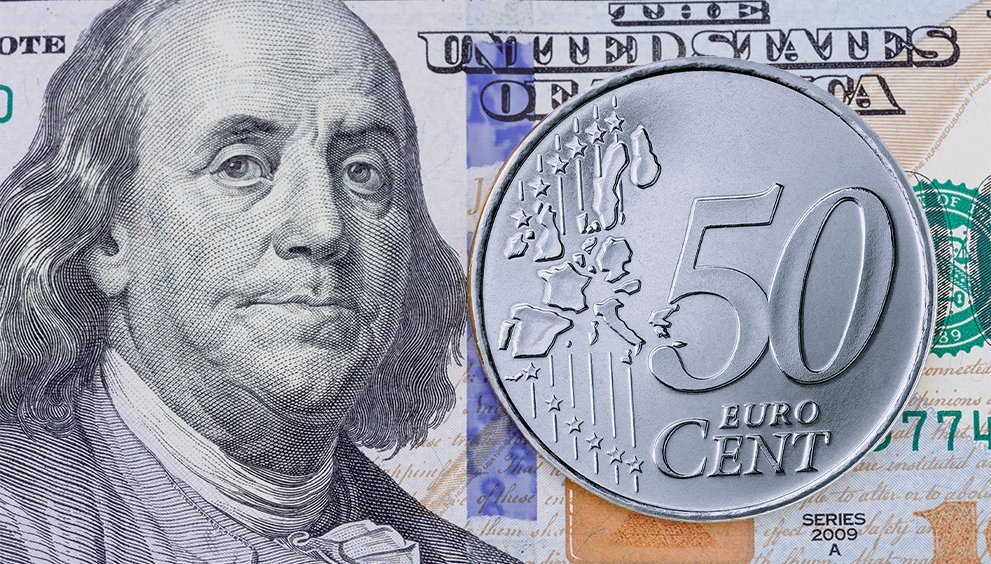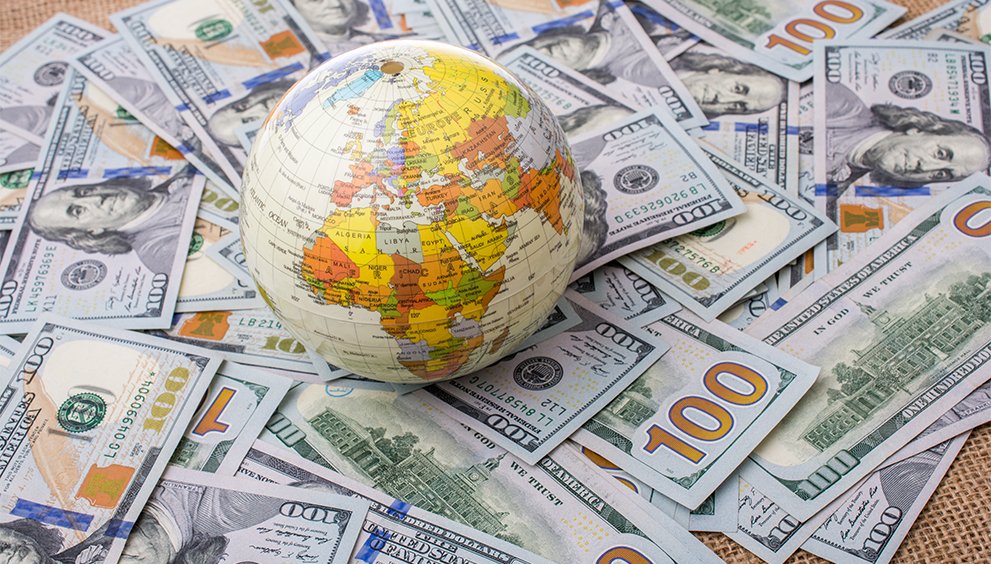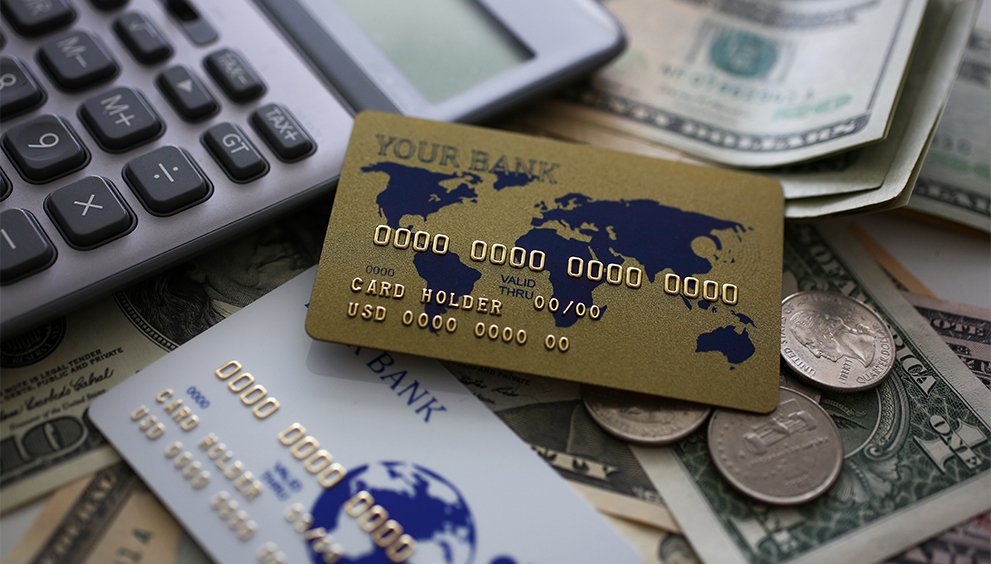GBP/USD Dips on Dollar Recovery as Investors Await UK, US Data, Fed Meeting

The GBP dropped a bit against the USD, with the GBP/USD pair trading around 1.3450 in the Asian session on Thursday. Marketers noted that this decline happened as the Dollar started experiencing a modest recovery. Investors are now awaiting new economic data results, specifically, the preliminary Purchasing Managers Index (PMI) reports of August in the UK and the United States, which is to be released later in the day. Analysts expect the markets to be concerned with the meeting of the US Federal Reserve at their annual Jackson Hole symposium, on Friday.
It is noted that the US dollar (Greenback) has strengthened against the British pound due to the reduced probability of a Federal Reserve rate cut in September, which was on the basis of higher than anticipated US wholesale prices in the month of August. With this, the markets continue to think that the Fed may ease in the future. A rate cut is priced in with a near-certain chance at the next meeting according to the CME FedWatch tool, with the total equivalent of around 52 basis points of interest commitment worth of reductions priced in between now and the end of the year.
It is noted that investors are looking out for the Fed’s Jackson Hole meeting on Friday. If Chair Powell is hawkish on inflation or does not hint at reducing rates soon, the U.S dollar could rise. Economists point out that a dollar rise is a classic adverse currency for significant currency pairs, it may influence other economies and financial markets.
It is noted that the UK inflation gathered a little momentum in July. The Consumer Price Index (CPI) that reflects the overall price increase grew by 3.8% on a year-over-year basis compared to 3.6% a month ago and slightly above the anticipated 3.7%. The CPI, including food and energy constituents, increased by 6.6%, higher than 6.5% in the previous month. Core CPI that excludes food prices and energy prices increased to 3.8%, an increment of 3.7% in the earlier. Prices increased 0.1% in July about half the rate in June on a monthly basis. It is estimated that analysts had already projected a drop of 0.1% in the prices and therefore, the outcome was better than the projected results.
Commentators observed that the markets now anticipate the Bank of England to wait longer before cutting interest rates again. Investors do not completely expect a quarter-point cut until March 2026. Just weeks ago, many anticipated another rate cut by late 2025, but expectations have shifted, slightly strengthening the pound.
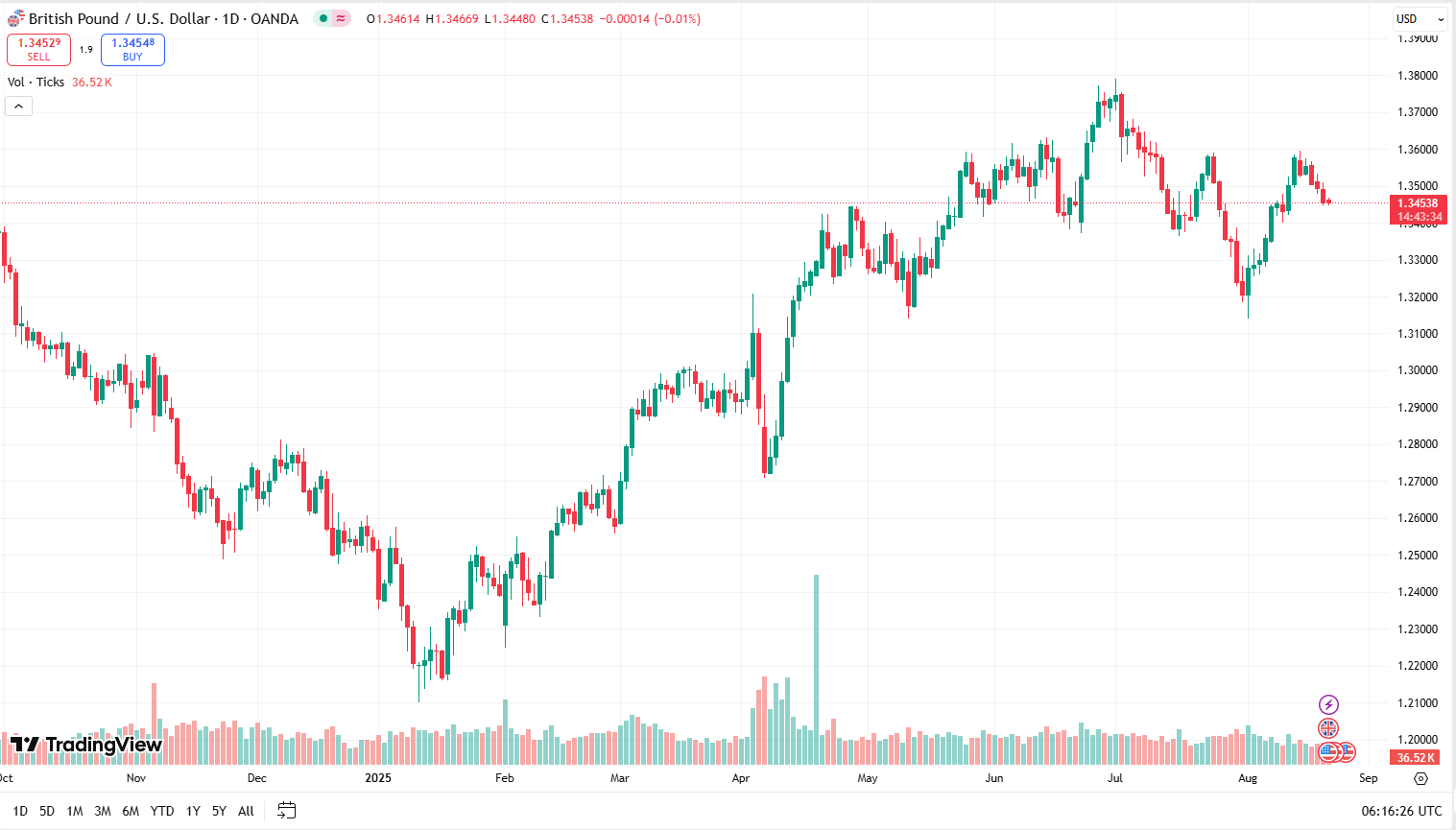
EUR/USD Dips to 1.1640 Amid Economic Data, Fed Rate Cut Expectations Rise
EUR/USD currency pair declined by a little to around 1.1640 during the Asian trading also on Thursday following slight improvements recorded in the prior session. Analysts note the weakening Euro against the US Dollar is due to the anticipation of new economic cues. It is believed that there is a keen focus on the upcoming Purchasing Managers’ Index (PMI) reports in Germany and the Eurozone at large, which determines the business activity and may also affect the mood in the markets. Market experts view such reports as important since they will give them information on the state of the economy, thus leading to greater shifts in the Euro.
According to sources, the PMI of Germany is going to be published on Thursday at 07:30 GMT with Services forecast at 50.3. The PMI releases in the Eurozone are coming out shortly followed by the first of the day: the publication of the PMI figures at 08:00GMT, the Manufacturing is expected to be 49.5 and Services 50.6. According to analysts, these indicators will reflect economic strength in these regions.
EU inflation based on the Harmonized Index of Consumer Prices (HICP) in July was 2% of the previous year as it was anticipated. The core HICP reached the rate of 2.3%, the same as in June, as well as what the economists expected. Analysts point out that this indicates that inflation dynamics are stable.
It has been reported that European Central Bank (ECB) President Christine Lagarde told the World Trade Organization there is less uncertainty because of new trade agreements though challenges still exist. She added that overall the European economy has been most resilient in adapting to a challenging and volatile global economy, which despite the financial setbacks experienced across the world, is performing well.
Reports point out that the EUR/USD pair declined following the publication of the US Federal Reserve, July meeting minutes. The report indicated that the majority of the Fed representatives are more concerned with the increase of inflation rather than boosting employment opportunities. Their decision was to maintain the interest rate at the same position of 4.25-4.50. Marketers observe that the debates showed rifts in the policymakers especially pertaining to the effects of tariffs. Analysts note that the hawkish attitude lent sufficient support to the US Dollar, with investors perceiving that the Fed was not budging on inflation. It is believed that this pressure made the euro to be weak in the currency trade against the dollar.
Traders believe the Federal Reserve would reduce interest rates in September with around 82% probability present in the futures. The eyes are now on Fed Chair Jerome Powell, who is scheduled to speak at the Jackson Hole Symposium on Friday, to provide investors with clues on the future course of action to be taken by the Fed.
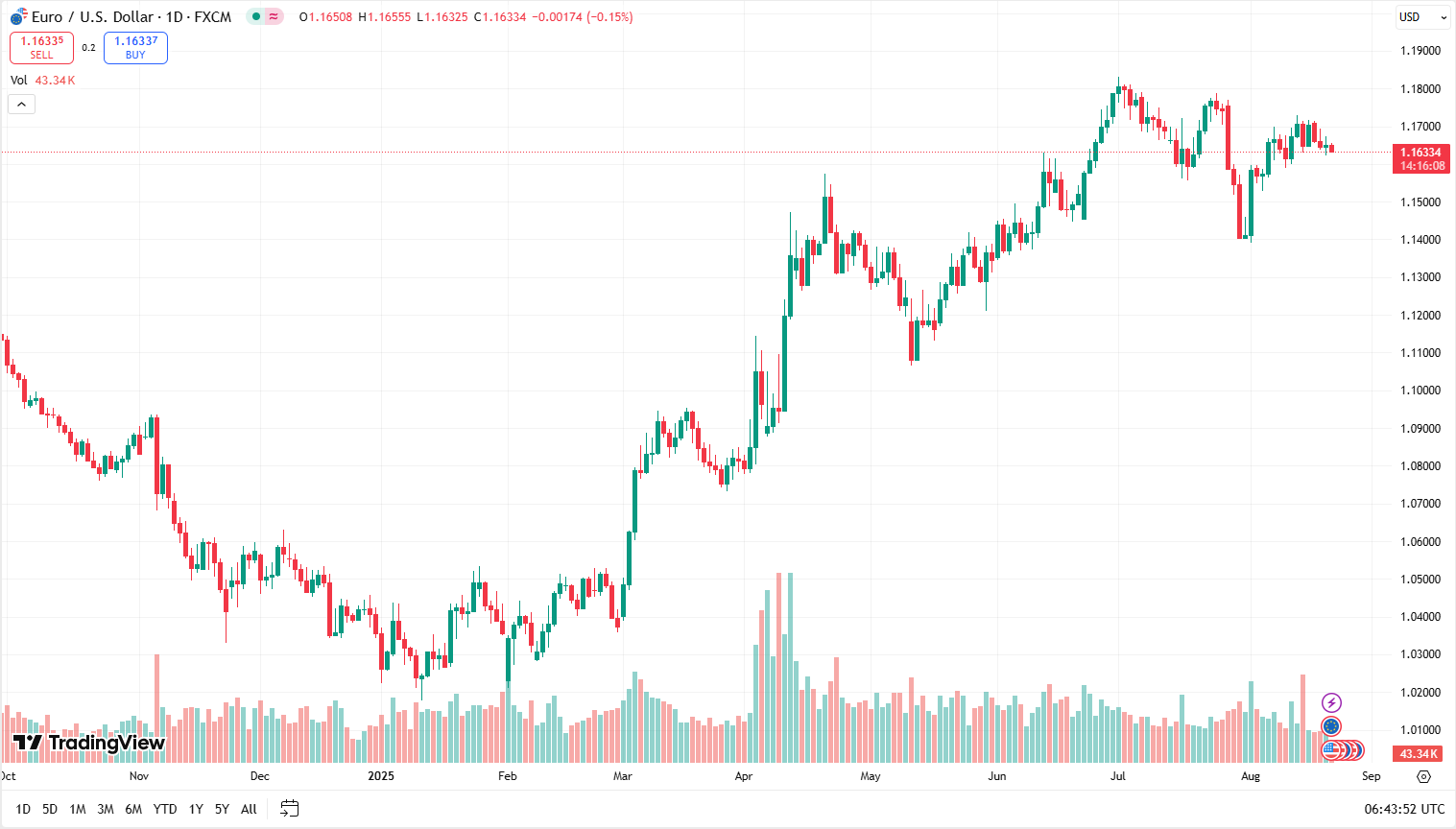
NZD/USD Hits 0.5815 Amid RBNZ Fears, Risks Falling Below 0.5700 Support
In Thursday’s Asian trading session, the NZD/USD pair dipped to its lowest level since April 14 at a level around 0.5815. Analysts believe that the Reserve Bank of New Zealand’s dovish stance, which signalled a weaker economic outlook and reduced investor demand for the New Zealand dollar, is believed to be the trigger for this fall, according to analysts.
Market experts believe that the Reserve Bank of New Zealand (RBNZ) has signalled that if inflation continues to fall as anticipated, it may cut interest rates further. It is thought that this sentiment has made the New Zealand dollar (Kiwi) weak, reinforced by the fact that it is complemented by a pinched market view. The US dollar meanwhile is also gaining strength, close to its best in more than a week as investors cut back their bets about rate cuts by the Federal Reserve. Analysts point out that this action makes the pair NZD/USD to be under pressure.
Marketers noted that NZD/USD has fallen under the 200-day Simple Moving Average, the first plunge under this time frame since May, which is a bearish sign. It is observed that the technical indicators such as negative oscillators are depicting a further downside momentum. Analysts point out that the Relative Strength Index (RSI) is about to move into the oversold territory, which indicates that the selling pressure is overextended. Although the trend indicates that it is weak, analysts are warning traders that due to the oversold conditions, bounces or slower falls may appear.
Market commentators note that the market may take a short respite or maybe a bullish rise then carry on with its ongoing trend. Any rebound above the 0.5835 or the 200-day SMA may act as a selling opportunity with a resistance coming around 0.5880-0.5885. It is believed that these levels may restrict profits and influence the recovery in a short period. Market reports anticipate that if the price is able to breach and consolidate above the 0.5900 level, it may represent strength and may lead to a more sustainable increase in price.
Analysts point out that if NZD/USD falls below 0.5800 then it indicates a fall in strength and bearish trend. The pair may then pull down to support levels 0.5765-0.5760. Analysts anticipate that if the selling stress continues, it may drop again to 0.5730–0.5725 before slamming through 0.5700, targeting the key support level at 0.5675, heightening downside risks for the currency pair.
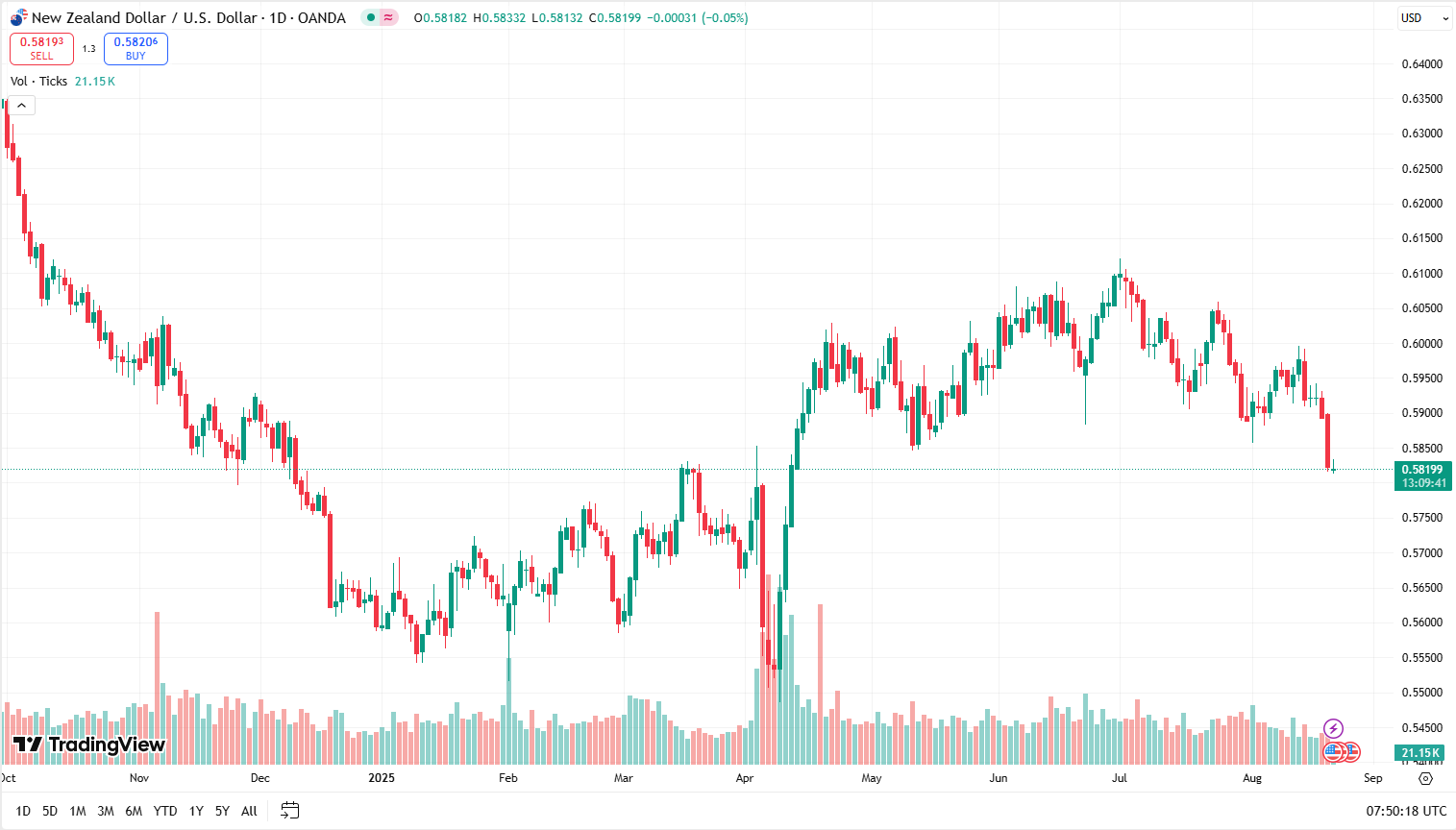
USD/CHF Rebounds to 0.5%, Fed Rate Cut Hopes Rise; Swiss Inflation Below 2%
The USD/CHF currency pair hovered about 0.8050 in the Asian hours Thursday, rebounding after dropping almost 0.5% in the previous session. Marketers anticipate that this recovery occurred after the US Dollar strengthened with the publication of the US Federal Reserve July’s minutes, which caused a wave of influence on the market. The traders are currently waiting on the Swiss trade balance later in the day to give indications of the strength of the Swiss Franc. Following the US preliminary S&P Global Purchasing Managers Index (PMI) expected later in the North American session, market analysts expect a change in direction towards the US as it may influence the short-term performance of the pair.
Reports note that the Fed minutes published of the latest meeting indicated that officials were increasingly concerned about inflation than the weak job market. Analysts anticipate that tariffs were an aspect that brought disagreement among the policy makers. Even though their opinions were different they still agreed that the interest rates remain at 4.25% to 4.50%. Market analysts are adopting to believe that the Fed is concerned and it is trying to bring inflation to a halt instead of prematurely reducing rates and face the risk of losing its ability of reducing rates later on.
Analysts note that traders who are monitoring the FedWatch tool on the CME are tracking an 82% likelihood that the Federal Reserve will cut the interest rates during the bookkeeping month of September. This implies that the majority of investors expect the interest rates to be reduced in the near future to boost the economy. Nevertheless, it is still not clear. Global commentators indicate that the interests of the markets are focused on a speech by Fed Chair Jerome Powell at Jackson Hole Symposium on Friday, as his remarks can provide important cues as to whether the Fed will go through with the anticipated rate reduction.
Market watchers noted that Swiss inflation remained below the Swiss National Bank’s 2% target, increasing the likelihood of more interest rate cuts, maybe even to zero. At the same time, the United States has imposed a high 39% levy on Swiss imports. Market analysts believe that this could have some effects on the economy of Switzerland which highly depends on exports. Such pressures and low inflation can send the Swiss National Bank into easing policy further so that it supports growth and stability.
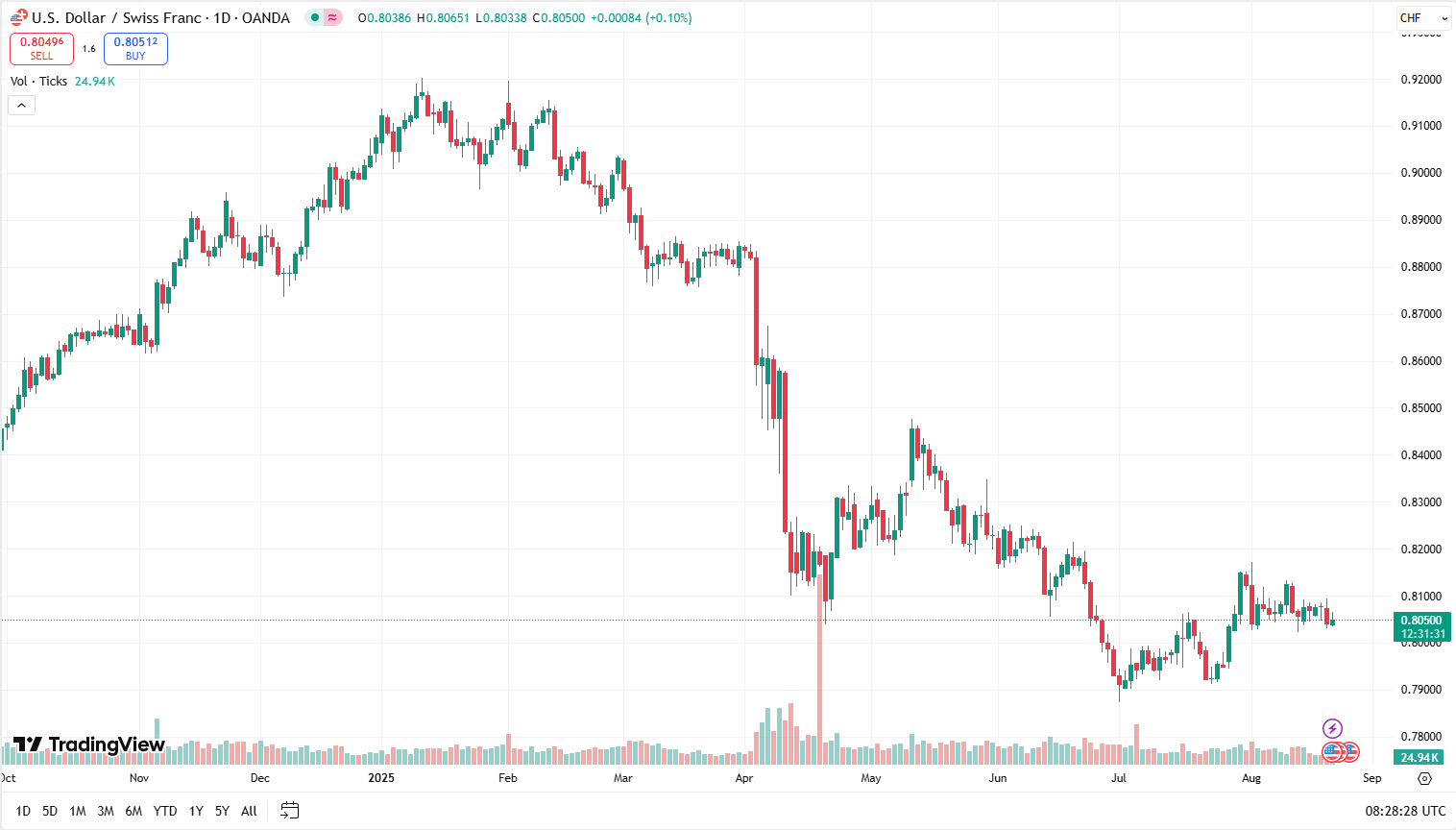


 English
English 







